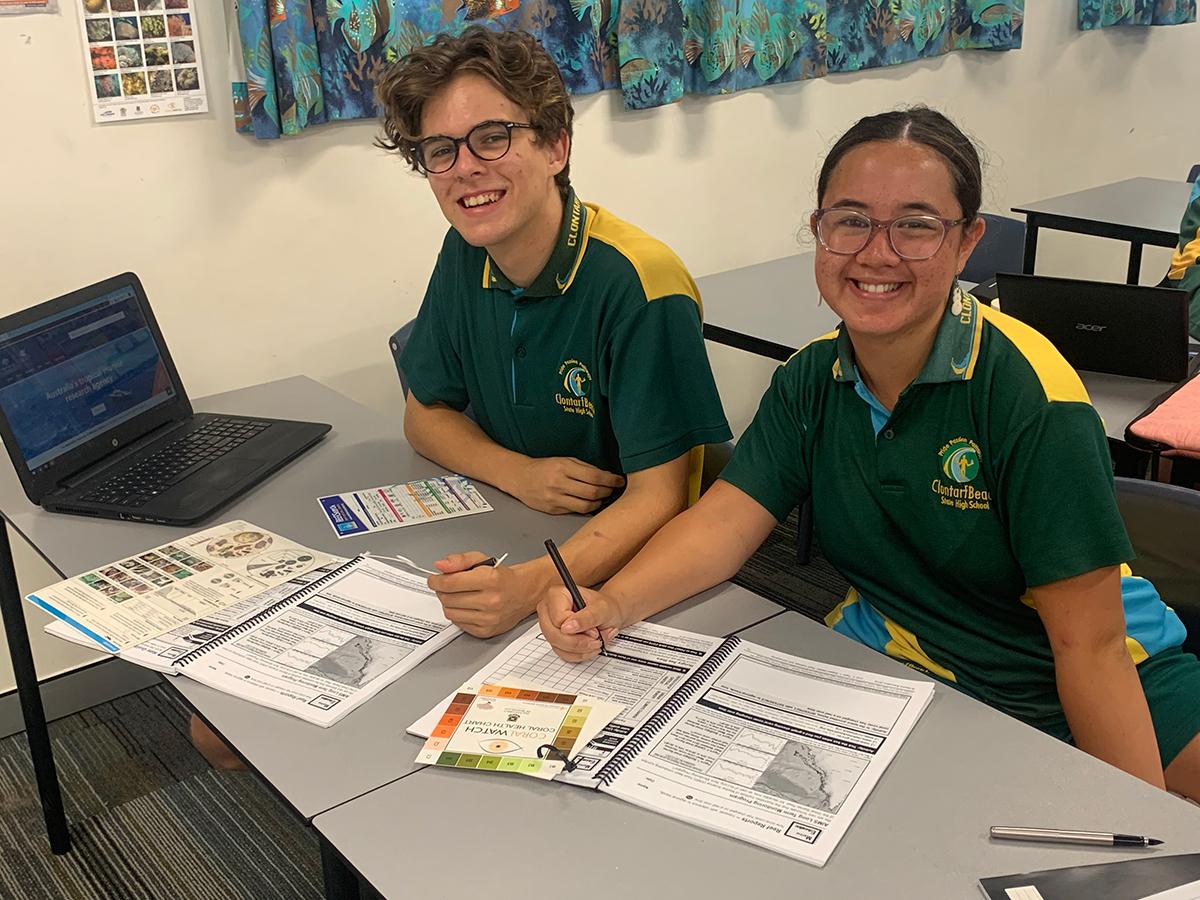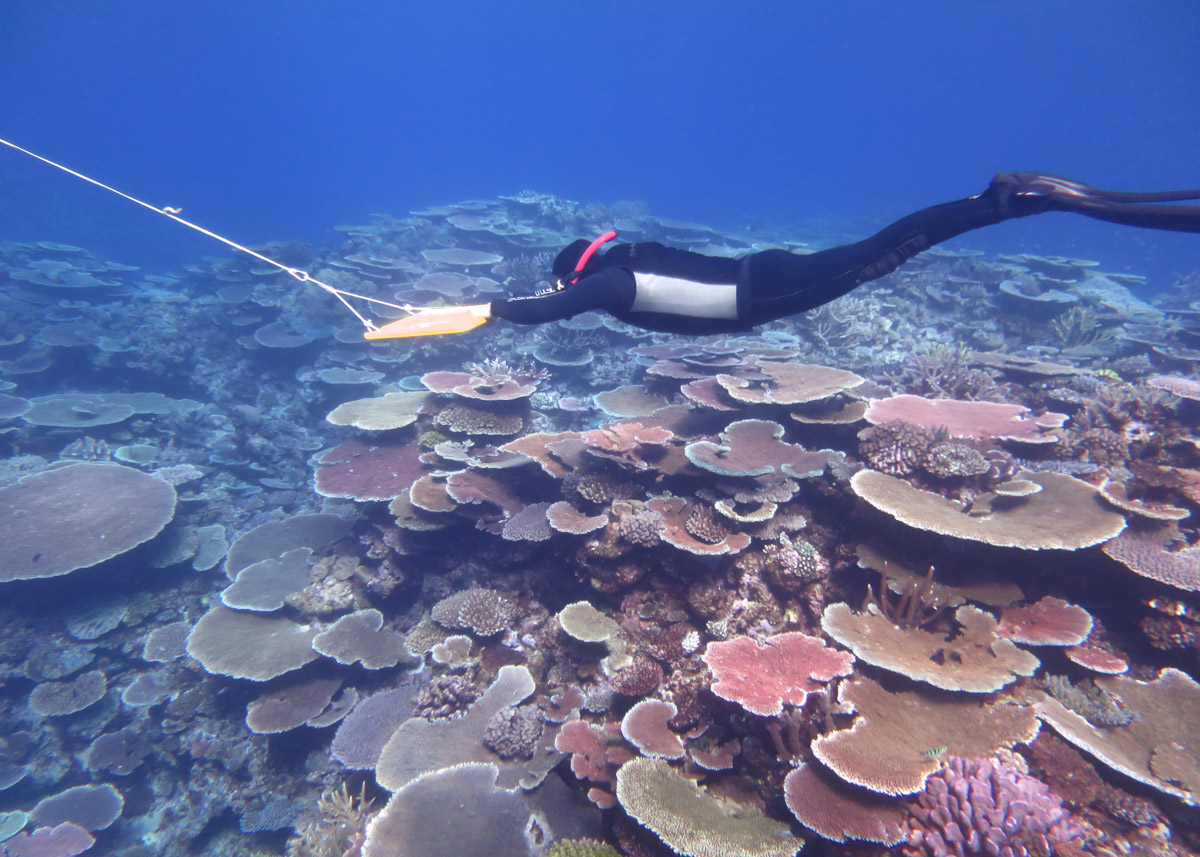Queensland’s marine science students are now accessing the latest in long-term monitoring information on the health of the Great Barrier Reef.
The Australian Institute of Marine Science’s (AIMS) long-term monitoring graphs have been included in a student workbook, giving Year 12 students accurate information to interpret, with reference to regional trends, how coral cover has changed on reefs over time.
Thursday Island study AIMS long term reef monitoring data
AIMS’ Long Term Monitoring Program leader Dr Mike Emslie said the Institute’s researchers had explored marine life in the World Heritage Area for nearly 50 years, and held 37 years of ongoing annual monitoring data, detailing the Reef’s health.
“It is great to see students getting access to the actual data which our experts collect and analyse, and which reefs managers use to understand what is happening in the marine park,” Dr Emslie said.
Marine science teacher and author of the 160-page Year 12 Marine Science student workbook, Gail Riches, said the graphs demonstrated the value of actual data to interpret trends and identify changes to the reef over time.
“I felt it was important for Marine Science students to be made aware of the wonderful work the Australian Institute of Marine Science has been doing for the reef over many years, and what a valuable resource it is,” Ms Riches said.
“The workbook uses actual working science to inform students of the health of the reef and these graphs demonstrate to students how a rigid methodology can be used to obtain reliable and valid results.
“The graphs are readily available and easy to access for students to find and use for their assignments. It felt like a no-brainer.”
The student workbook will teach the new syllabus to Queensland’s state and private school students, as part of the new Australian Tertiary Admission Score (ATAR) system, which has replaced the OP (overall position) system.
Subjects covered include information about coral bleaching, ocean acidification, reef resilience and recovery, fisheries and aquaculture, and concepts such as tipping points, connectivity, the biological pump and the carbonate buffering system.
Ms Riches said about 1000 year 12 students would access the workbook as part of their studies this year across Queensland, from the Torres Strait to the Gold Coast.
Learn more about AIMS’ latest reef monitoring surveys.
Feature image: Marine science students from Clontarf Beach State High School, Brisbane work from the Year 12 Marine Science student workbook.



